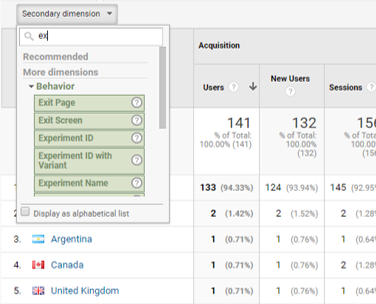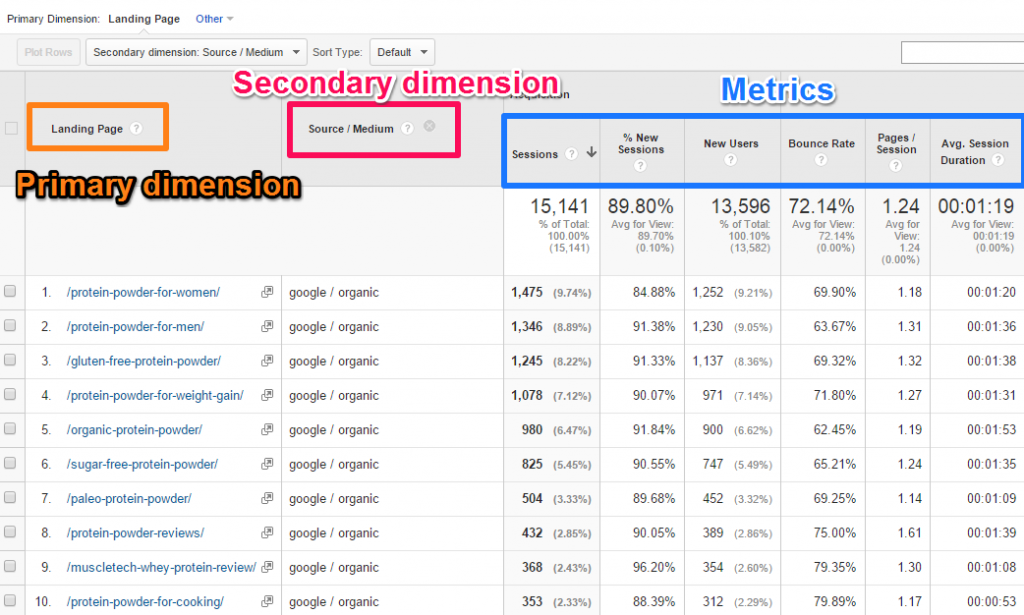Understanding the 'Secondary Dimension' in Google Analytics: Total Introduction
Understanding the 'Secondary Dimension' in Google Analytics: Total Introduction
Blog Article
Browsing the Depths of Second Measurement in Google Analytics: An In-depth Exploration on Its Functionality
Second dimensions, though seemingly uncomplicated at very first look, harbor a wealth of untapped prospective waiting to be taken advantage of. As we embark on this trip to check out the nuanced capability of secondary dimensions, we will certainly discover just how this feature can brighten patterns, unveil relationships, and ultimately pave the method for notified decision-making in the electronic landscape (what is a “secondary dimension” in google analytics?).
Understanding Secondary Dimensions in Google Analytics

Understanding exactly how second dimensions work is critical for leveraging the full power of Google Analytics. By incorporating main metrics with additional measurements, you can gain beneficial insights that drive educated decision-making and optimization approaches.
Leveraging Second Measurements for Data Evaluation
Structure upon the foundational understanding of how secondary dimensions boost data evaluation in Google Analytics, the utilization of these extra layers of info becomes critical in extracting useful understandings for notified decision-making and optimization methods. By leveraging additional measurements, analysts can dig deeper into the efficiency metrics by including even more context to the primary measurements, hence discovering surprise patterns and connections that could not be apparent at very first glance. This much deeper level of evaluation makes it possible for organizations to better comprehend user actions, identify trends, and identify locations for enhancement.
Furthermore, secondary measurements offer a more thorough sight of the data, permitting for segmentation based on various specifications such as demographics, gadgets, traffic sources, and a lot more. This segmentation helps with a more granular evaluation, enabling companies to tailor their projects and methods to particular target market sections for boosted targeting and personalization. Fundamentally, the calculated use secondary measurements equips companies to make data-driven decisions that drive growth and success in the electronic landscape.
Advanced Techniques for Second Measurement Execution
Exploring complex techniques to harness the complete capacity of secondary measurements in Google Analytics elevates the depth and class of information evaluation for calculated decision-making. One advanced method for executing secondary dimensions is the usage of customized dimensions. Additionally, combining additional measurements with advanced sectors can provide even much more granular understandings by using several layers of segmentation to the information.
Interpreting Insights Through Additional Dimensions

When translating understandings with secondary measurements, it is crucial to take into consideration the context of the data and just how various dimensions engage with each other. For instance, understanding which details web traffic resources bring about greater conversion prices or recognizing which devices users like for making acquisitions can offer workable understandings for enhancing advertising campaigns and improving general web site efficiency. By very carefully analyzing the information with second dimensions in mind, companies can make enlightened choices that drive purposeful outcomes and enhance their electronic existence.
Maximizing Efficiency With Additional Dimensions

One key method to optimize performance with secondary dimensions is by segmenting information extra granularly. This enables you to isolate details elements that might be affecting your metrics and gain a far better understanding of what drives success or failing in your electronic initiatives. For instance, by combining second dimensions such as 'tool category' and 'landing index page,' you can pinpoint which tool kinds are most effective for specific landing web pages, enabling you to tailor your methods accordingly.
Moreover, using secondary measurements can help you recognize patterns, patterns, and connections that might not be evident when evaluating data with key dimensions alone. This deeper degree of evaluation can bring about even more enlightened decision-making and inevitably boost the overall efficiency of your web site or electronic advertising and marketing campaigns.
Final Thought
Finally, additional dimensions in Google Analytics play a crucial function in enhancing information evaluation and offering much deeper understandings right into site efficiency. By making use of sophisticated methods and interpreting the information properly, services can enhance their techniques and boost total performance. Comprehending the performance of secondary dimensions is crucial for making notified decisions and driving success in the digital landscape.
By leveraging second dimensions, experts can delve deeper into the efficiency home metrics by including find more information even more context to the primary dimensions, hence uncovering hidden patterns and correlations that could not be noticeable at very first glimpse. One sophisticated technique for executing additional measurements is the usage of customized measurements.Having actually understood advanced methods like custom dimensions and regex for secondary measurement application in Google Analytics, the next essential step is analyzing the useful understandings acquired with these innovative information division techniques. Translating understandings through second dimensions entails assessing the partnerships in between the second and primary dimensions selected, revealing patterns, fads, and relationships that may not be promptly evident when looking at the information in its entirety.When translating understandings through second dimensions, it is necessary to think about the context of the information and how different dimensions engage with each other.
Report this page